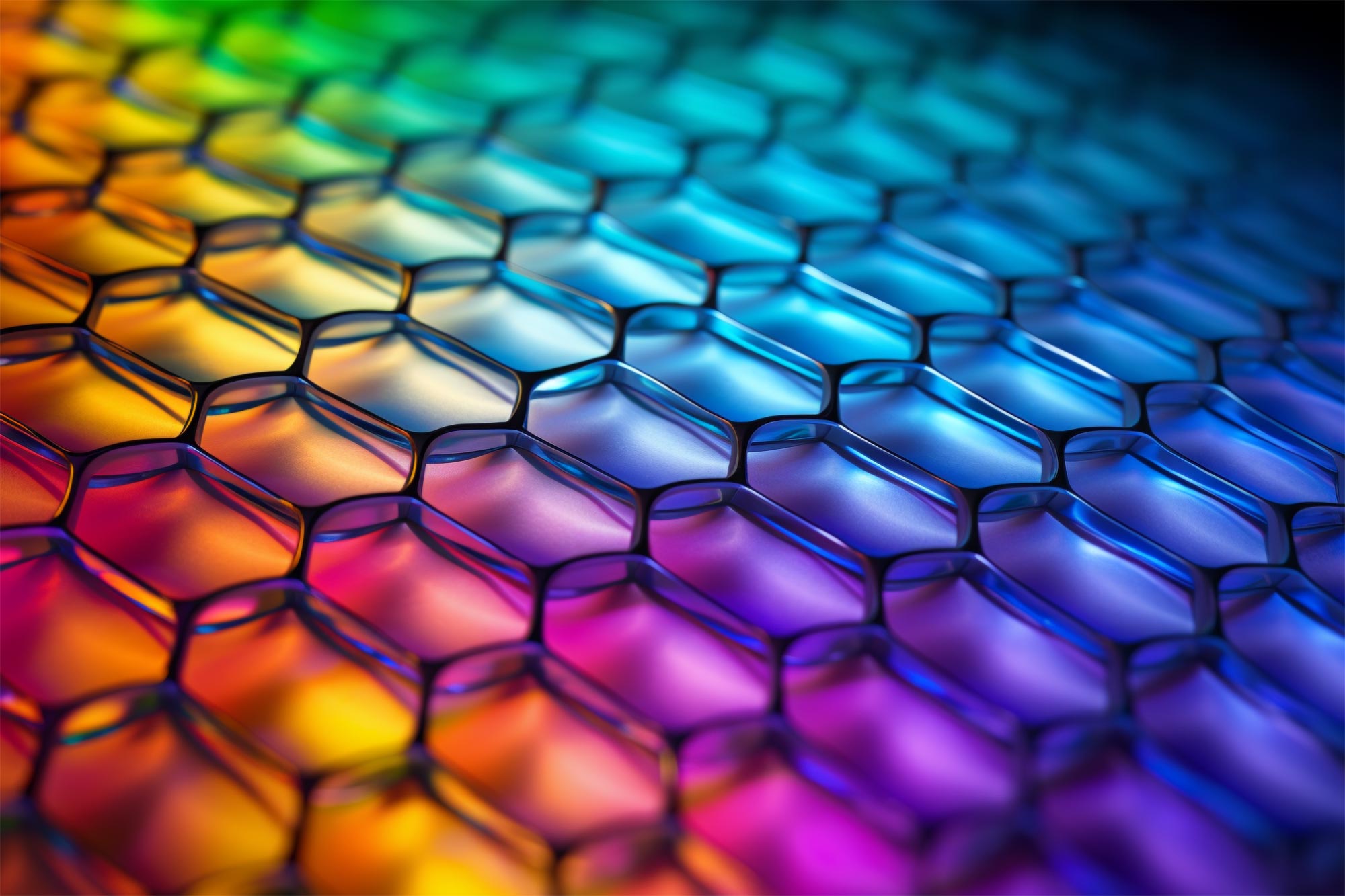

Researchers have utilized the rainbow scattering technique to effectively study the structure and imperfections of graphene, paving the way for more advanced studies of this versatile material.
New research uses protons to shine a light on the structure and imperfections of this two-dimensional wonder material.
Graphene is a two-dimensional wonder material that has been suggested for a wide range of applications in energy, technology, construction, and more since it was first isolated from graphite in 2004.
This single layer of carbon atoms is tough yet flexible, light but with high resistance, with graphene calculated to be 200 times more resistant than steel and five times lighter than aluminum.
Graphene may sound perfect, but it very literally is not. Isolated samples of this 2D allotrope aren’t perfectly flat, with its surface rippled. Graphene can also feature structural defects that can, in some cases, be deleterious to its function and, in other instances, can be essential to its chosen application. That means that the controlled implementation of defects could enable fine-tuning of the desired properties of two-dimensional crystals of graphene.
Insights From Rainbow Scattering on Graphene
In a new paper published in The European Physical Journal D (EPJ D), Milivoje Hadžijojić and Marko Ćosić, both of the Vinča Institute of Nuclear Sciences, University of Belgrade, Serbia, examine the rainbow scattering of photons passing through graphene and how it reveals the structure and imperfections of this wonder material.
While there are other ways of investigating the imperfections of graphene, these have drawbacks. For instance, Raman spectroscopy can not distinguish some defect types, while high-resolution transmission electron microscopy can characterize crystal structure defects with outstanding resolution, but the energetic electrons it uses can degrade the crystal lattice.
“The rainbow effect is not that rare in nature. It was discovered in scattering of the atoms and molecules as well. It was detected in ion scattering experiments on thin crystals. We have theoretically studied a scattering of low energy protons on graphene and demonstrated that rainbow effect occurs in this process as well,” Hadžijojić says. “Furthermore, we have shown that graphene structure and thermal vibrations could be studied via proton rainbow scattering effect.”
Using a process called rainbow scattering, the duo observed the diffraction they took as this passed through the graphene and the “rainbow” pattern created.
Characterizing the diffraction pattern, the researchers found perfect graphene gave a rainbow pattern in which the middle part was a single line with the inner part demonstrating a pattern with hexagonal symmetry, a symmetry that was absent in imperfect graphene.
The scientists also concluded that specific defect types produce their own distinct rainbow patterns, and this could be used in future research to identify and characterize defect types in a graphene sample.
Hadžijojić concluded, “Our approach is rather unique and could potentially serve as a useful complementary characterization technique of graphene and similar two-dimensional materials.”
Reference: “Study of graphene by proton rainbow scattering” by M. Hadžijojić and M. Ćosić, 30 May 2023, The European Physical Journal D.
DOI: 10.1140/epjd/s10053-023-00664-y